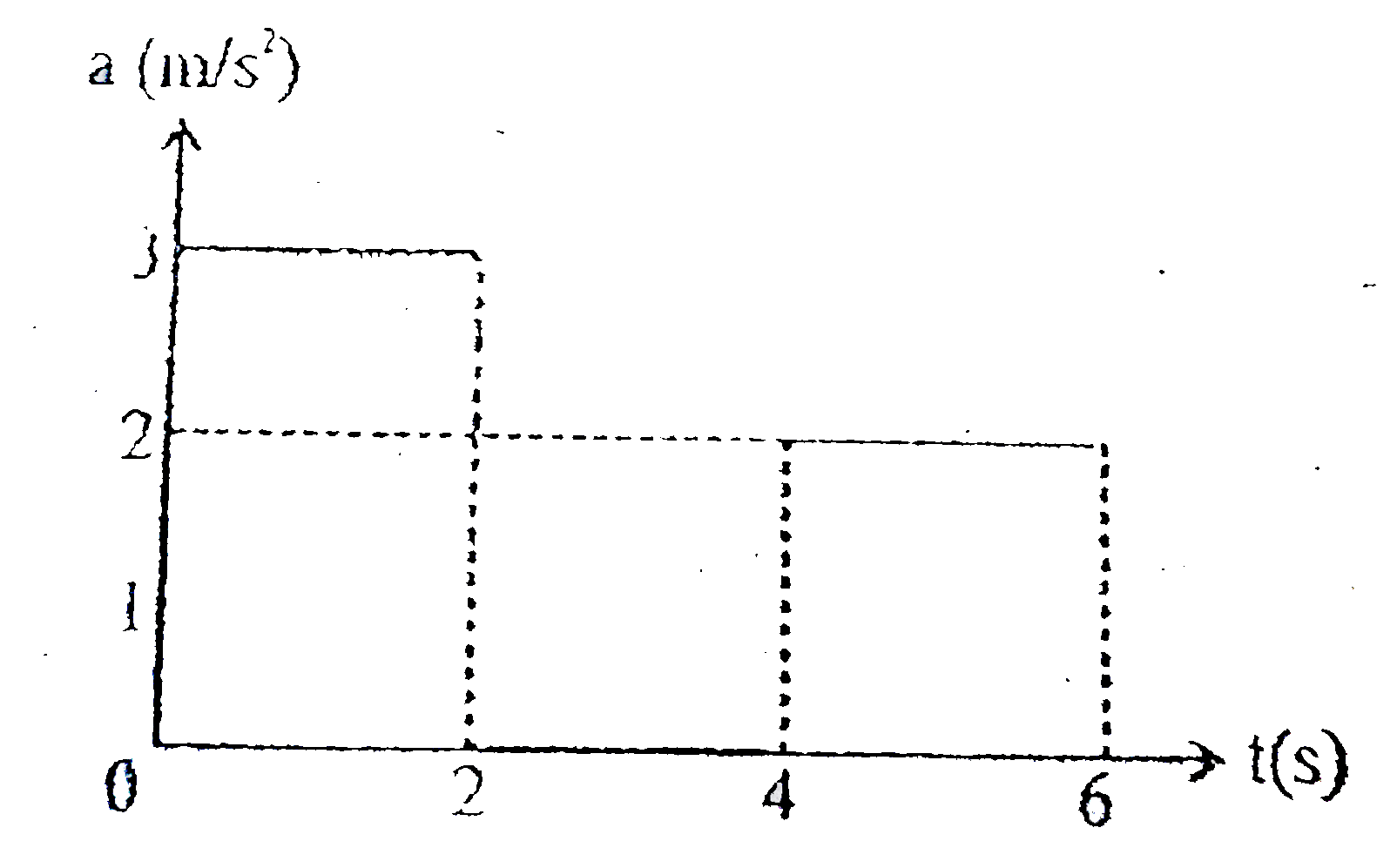The dispacement of a body is given by 4s=M+2Nt4, where M and N are constants.
The velocity of the body at any instant is .
M+2Nt44
2N
M+2N4
2Nt3
The correct Answer is:D
To find the velocity of the body given the displacement equation 4s=M+2Nt4, we will follow these steps:
Step 1: Rearrange the Displacement Equation
The displacement s can be expressed as:
s=M+2Nt44
Step 2: Differentiate Displacement with Respect to Time
To find the velocity v, we need to differentiate s with respect to time t:
v=dsdt
Step 3: Apply the Chain Rule
Using the chain rule for differentiation:
v=ddt(M+2Nt44)
Since M is a constant, its derivative is zero. Thus, we focus on the term 2Nt4:
v=14⋅ddt(2Nt4)
Step 4: Differentiate 2Nt4
Now, we differentiate 2Nt4:
ddt(2Nt4)=2N⋅4t3=8Nt3
Step 5: Substitute Back into the Velocity Equation
Substituting this back into the equation for velocity:
v=14⋅8Nt3=2Nt3
Final Answer
Thus, the velocity of the body at any instant is:
v=2Nt3
---
The displacement s can be expressed as:
s=M+2Nt44
To find the velocity v, we need to differentiate s with respect to time t:
v=dsdt
Using the chain rule for differentiation:
v=ddt(M+2Nt44)
Since M is a constant, its derivative is zero. Thus, we focus on the term 2Nt4:
v=14⋅ddt(2Nt4)
Now, we differentiate 2Nt4:
ddt(2Nt4)=2N⋅4t3=8Nt3
Substituting this back into the equation for velocity:
v=14⋅8Nt3=2Nt3
Thus, the velocity of the body at any instant is:
v=2Nt3
Topper's Solved these Questions
- BOOK - CENGAGE PHYSICS ENGLISHCHAPTER - KINEMATICS-1EXERCISE - Integer9videos
KINEMATICS-1
- BOOK - CENGAGE PHYSICS ENGLISHCHAPTER - KINEMATICS-1EXERCISE - Assertion-reasoning5videos
KINEMATICS-1
- BOOK - CENGAGE PHYSICS ENGLISHCHAPTER - GRAVITATIONEXERCISE - INTEGER_TYPE1videos
GRAVITATION
- BOOK - CENGAGE PHYSICS ENGLISHCHAPTER - KINEMATICS-2EXERCISE - Exercise Integer9videos
KINEMATICS-2
Similar Questions
The dispacement of a body is given by 4s=M+2Nt4, where M and N are constants.
The velocity of the body at the end of 1s from the start is .View SolutionThe displacement of a body is given by s=12gt2 where g is acceleration due to gravity. The velocity of the body at any time t is
View SolutionThe displacement of a body at any time t after starting is given by s=15t−0.4t2. Find the time when the velocity of the body will be 7ms−1.
View SolutionThe position of a body moving along x-axis at time t is given by x=(t2−4t+6)m. The velocity of the body at time t = 3s is
View SolutionThe motion of a body falling from rest in a resisting medium is described by the equation (dv)/(dt)=a−bv where a and b are constant . The velocity at any time t is given by
View SolutionThe coordinates of a body moving in a plane at any instant of time t are x=αt2 and y=βt2. The velocity of the body is
View SolutionThe dependence of the acceleration of a body with time is shown in Figure. At t=0, the velocity of the body is −3m/s and position is x=0m.
 View Solution
View SolutionA body is executing S.H.M. when its displacement from the mean position is 4 cm and 5 cm, the corresponding velocity of the body is 10 cm/sec and 8 cm/sec. Then the time period of the body is
View SolutionA body starts from the origin and moves along the X-axis such that the velocity at any instant is given by (4t3−2t), where t is in sec and velocity in m/s. what is the acceleration of the particle when it is 2 m from the origin?
View SolutionA body starts from the origin and moves along the X-axis such that the velocity at any instant is given by (4t3−2t), where t is in sec and velocity in m/s. what is the acceleration of the particle when it is 2 m from the origin?
View Solution

